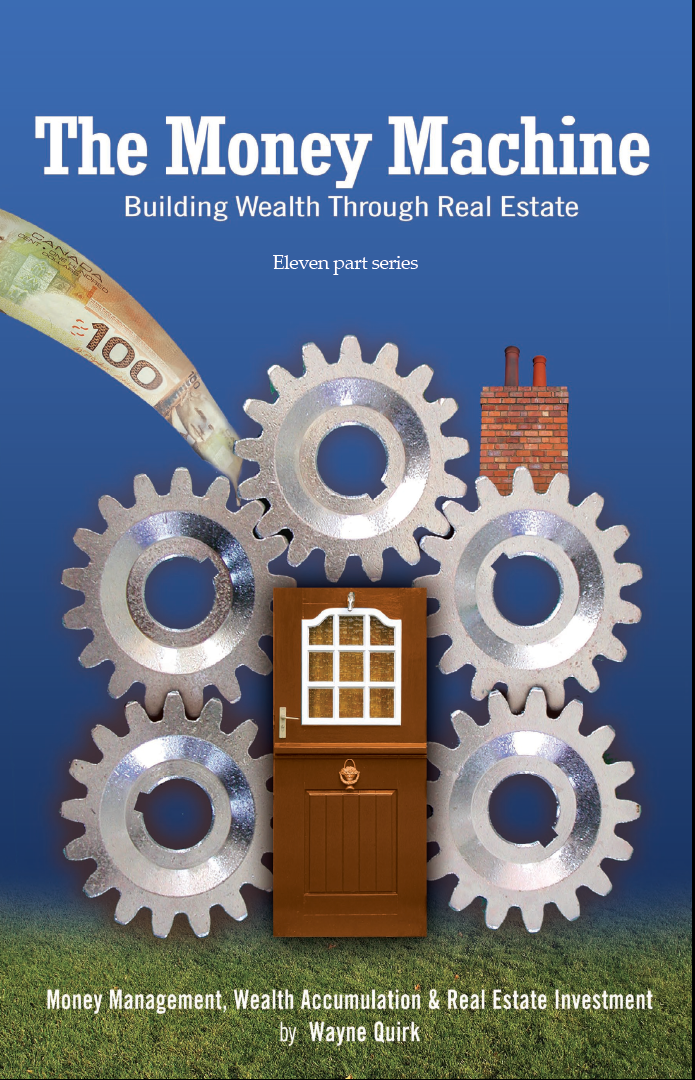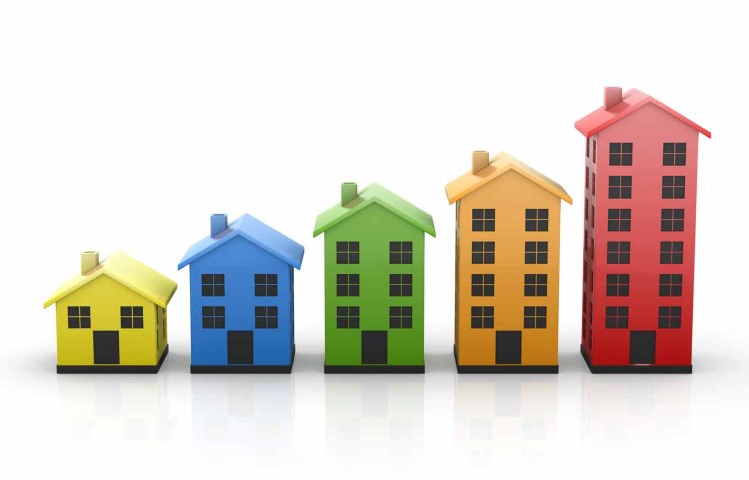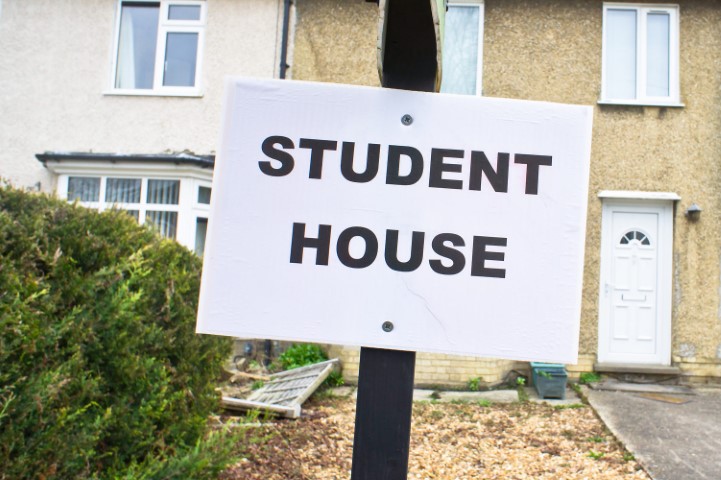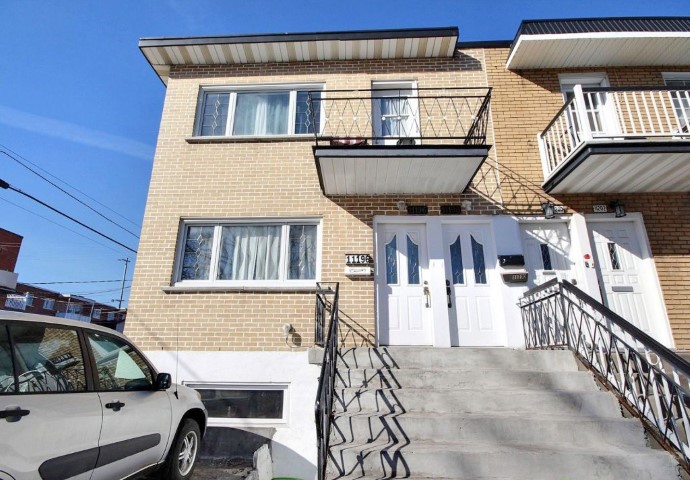THE MONEY MACHINE
Getting Started : What to Buy
 I’m going to assume at this point that you’ve followed along on the series of e-newsletter articles entitled The Money Machine. You understand the concept of passive income through property ownership and hopefully you are now anxious to get started. Last issue we looked at the question of ‘When to Buy’ and we saw that for long term real estate investment there really is no bad time to buy. Now we want to move on to the question of ‘What to Buy?’ Where should we get started? Here again, there is no one answer fits all. If you are a seasoned investor with deep pockets you might be looking at a large apartment building or commercial strip plaza. There is a lot of advantages to this type of property ownership. But for most of us, the average working guy or gal who is interested in developing an investment portfolio to carry you comfortably into retirement and you are just getting started, there are certainly some tips I can give you on what to buy, where to buy and perhaps what not to buy. If you are following ‘the simple plan’ as outlined in The Money Machine seminars and articles, you’ll be working on building a portfolio of at least 10 properties. I would suggest you mix the portfolio with singles, semis, multi-family, probably duplexes and triplexes, and perhaps a condo or two. Not in any particular order. Acquire them as you come across properties that personally appeal – that ‘speak to you’.
I’m going to assume at this point that you’ve followed along on the series of e-newsletter articles entitled The Money Machine. You understand the concept of passive income through property ownership and hopefully you are now anxious to get started. Last issue we looked at the question of ‘When to Buy’ and we saw that for long term real estate investment there really is no bad time to buy. Now we want to move on to the question of ‘What to Buy?’ Where should we get started? Here again, there is no one answer fits all. If you are a seasoned investor with deep pockets you might be looking at a large apartment building or commercial strip plaza. There is a lot of advantages to this type of property ownership. But for most of us, the average working guy or gal who is interested in developing an investment portfolio to carry you comfortably into retirement and you are just getting started, there are certainly some tips I can give you on what to buy, where to buy and perhaps what not to buy. If you are following ‘the simple plan’ as outlined in The Money Machine seminars and articles, you’ll be working on building a portfolio of at least 10 properties. I would suggest you mix the portfolio with singles, semis, multi-family, probably duplexes and triplexes, and perhaps a condo or two. Not in any particular order. Acquire them as you come across properties that personally appeal – that ‘speak to you’.  As a rule of thumb, the easier the property is to manage, the poorer the returns. Properties that yield the highest returns will be the most demanding. At the top of the list for high yield, high attention would be a rooming house or student accommodation which are really one in the same. Here you have a number of unrelated people who perhaps each have their own bedroom, but each share a lot of common area: kitchen, bath, living room, etc.. In the case of a rooming house you tend to get a lot of transient people. Generally not long term. And with the case of student housing, you have the added challenge of immaturity. I recall some years ago when my son was in his upper teens he wanted to go with a friend to Las Vegas for the weekend. Even with me guaranteeing it, we couldn’t find a hotel who would rent to anyone under 21 years old. Discriminating? Maybe. But since it was Vegas they were playing the odds and weren’t prepared to bet on a young person. You’ll make more money, better cash flow in a rooming house or student rental, but you’ll earn every penny.
As a rule of thumb, the easier the property is to manage, the poorer the returns. Properties that yield the highest returns will be the most demanding. At the top of the list for high yield, high attention would be a rooming house or student accommodation which are really one in the same. Here you have a number of unrelated people who perhaps each have their own bedroom, but each share a lot of common area: kitchen, bath, living room, etc.. In the case of a rooming house you tend to get a lot of transient people. Generally not long term. And with the case of student housing, you have the added challenge of immaturity. I recall some years ago when my son was in his upper teens he wanted to go with a friend to Las Vegas for the weekend. Even with me guaranteeing it, we couldn’t find a hotel who would rent to anyone under 21 years old. Discriminating? Maybe. But since it was Vegas they were playing the odds and weren’t prepared to bet on a young person. You’ll make more money, better cash flow in a rooming house or student rental, but you’ll earn every penny.  On the other end of the ease of management spectrum is a condo. Why? Because you don’t have to worry about outside maintenance. Snow removal, lawn care, garbage retrieval are all done for you. And in some cases a site superintendent is even available to help find a tenant. But you pay for all that in the way of CAM (Common Area and Maintenance) charges. It’s tougher to get a condo to carry. Add one or two to your portfolio for sure, but perhaps later along when you’ve got surplus cash flow to subsidize a shortfall. Probably one of the best elements to add to your portfolio is a small multi-family unit, such as a duplex or triplex. Now they do present certain challenges that you don’t generally face with a simple family dwelling or semi-detached. Someone, for example has to maintain the yard, remove the snow and keep the hallways and laundry area clean. I’ve generally found I can rent the main floor with the understanding that that tenant is responsible for these things, by letting him feel like it is his house (and yard) and by giving him a small break on his monthly rent. A duplex or triplex will give you a better return on your investment than a single family home or condo, but they will require a little more skill and care. You’ve got to get two or three families that get along. You’ve got to balance the heat, etc.. But these properties are well worth the extra effort and once you’ve got things set
On the other end of the ease of management spectrum is a condo. Why? Because you don’t have to worry about outside maintenance. Snow removal, lawn care, garbage retrieval are all done for you. And in some cases a site superintendent is even available to help find a tenant. But you pay for all that in the way of CAM (Common Area and Maintenance) charges. It’s tougher to get a condo to carry. Add one or two to your portfolio for sure, but perhaps later along when you’ve got surplus cash flow to subsidize a shortfall. Probably one of the best elements to add to your portfolio is a small multi-family unit, such as a duplex or triplex. Now they do present certain challenges that you don’t generally face with a simple family dwelling or semi-detached. Someone, for example has to maintain the yard, remove the snow and keep the hallways and laundry area clean. I’ve generally found I can rent the main floor with the understanding that that tenant is responsible for these things, by letting him feel like it is his house (and yard) and by giving him a small break on his monthly rent. A duplex or triplex will give you a better return on your investment than a single family home or condo, but they will require a little more skill and care. You’ve got to get two or three families that get along. You’ve got to balance the heat, etc.. But these properties are well worth the extra effort and once you’ve got things set  up, they should cause you very little problem.
up, they should cause you very little problem.
A word of advice when it comes to multi-family properties. This is just my experience so take it for what it’s worth, but when it comes to shopping for that duplex or triplex, avoid properties that were built as a single family dwelling but were converted. That old Victorian Mansion of yesteryear that’s been converted to a duplex or triplex might seem like a good idea, but more often than not it’s more problems that it’s worth, poor unit layout, poor sound attenuation, heating and electrical challenges. Often a money pit. When it comes to multi-family, look for properties that were designed and built as such. One last thought. They say the three most important factors in real estate value are location, location, location. A lot of truth to that in rental real estate as well. Of course you are subject to zoning limitations, but try to pick a good area. One you would be happy to live in yourself. And buy quality. Resist the temptation to be a slum landlord. You are in this for the long haul. Place quality ahead of highest returns. Vacancy rates are extremely low right now. You can be pretty selective about finding a tenant. But it may not always be that way. By buying quality property in good neighbourhoods and keeping them well maintained you’ll always be among the properties of choice with perspective tenants. Then with careful screening, you’ll keep them full with quality tenants and operate relatively problem free.
Wayne Quirk, Author
“THE MONEY MACHINE”
wayneq@remax-gc.com

 I’m going to assume at this point that you’ve followed along on the series of e-newsletter articles entitled The Money Machine. You understand the concept of passive income through property ownership and hopefully you are now anxious to get started. Last issue we looked at the question of ‘When to Buy’ and we saw that for long term real estate investment there really is no bad time to buy.
I’m going to assume at this point that you’ve followed along on the series of e-newsletter articles entitled The Money Machine. You understand the concept of passive income through property ownership and hopefully you are now anxious to get started. Last issue we looked at the question of ‘When to Buy’ and we saw that for long term real estate investment there really is no bad time to buy.  As a rule of thumb, the easier the property is to manage, the poorer the returns. Properties that yield the highest returns will be the most demanding. At the top of the list for high yield, high attention would be a rooming house or student accommodation which are really one in the same. Here you have a number of unrelated people who perhaps each have their own bedroom, but each share a lot of common area: kitchen, bath, living room, etc.. In the case of a rooming house you tend to get a lot of transient people. Generally not long term. And with the case of student housing, you have the added challenge of immaturity. I recall some years ago when my son was in his upper teens he wanted to go with a friend to Las Vegas for the weekend. Even with me guaranteeing it, we couldn’t find a hotel who would rent to anyone under 21 years old. Discriminating? Maybe. But since it was Vegas they were playing the odds and weren’t prepared to bet on a young person. You’ll make more money, better cash flow in a rooming house or student rental, but you’ll earn every penny.
As a rule of thumb, the easier the property is to manage, the poorer the returns. Properties that yield the highest returns will be the most demanding. At the top of the list for high yield, high attention would be a rooming house or student accommodation which are really one in the same. Here you have a number of unrelated people who perhaps each have their own bedroom, but each share a lot of common area: kitchen, bath, living room, etc.. In the case of a rooming house you tend to get a lot of transient people. Generally not long term. And with the case of student housing, you have the added challenge of immaturity. I recall some years ago when my son was in his upper teens he wanted to go with a friend to Las Vegas for the weekend. Even with me guaranteeing it, we couldn’t find a hotel who would rent to anyone under 21 years old. Discriminating? Maybe. But since it was Vegas they were playing the odds and weren’t prepared to bet on a young person. You’ll make more money, better cash flow in a rooming house or student rental, but you’ll earn every penny.  On the other end of the ease of management spectrum is a condo. Why? Because you don’t have to worry about outside maintenance. Snow removal, lawn care, garbage retrieval are all done for you. And in some cases a site superintendent is even available to help find a tenant. But you pay for all that in the way of CAM (Common Area and Maintenance) charges. It’s tougher to get a condo to carry. Add one or two to your portfolio for sure, but perhaps later along when you’ve got surplus cash flow to subsidize a shortfall.
On the other end of the ease of management spectrum is a condo. Why? Because you don’t have to worry about outside maintenance. Snow removal, lawn care, garbage retrieval are all done for you. And in some cases a site superintendent is even available to help find a tenant. But you pay for all that in the way of CAM (Common Area and Maintenance) charges. It’s tougher to get a condo to carry. Add one or two to your portfolio for sure, but perhaps later along when you’ve got surplus cash flow to subsidize a shortfall.  up, they should cause you very little problem.
up, they should cause you very little problem. 